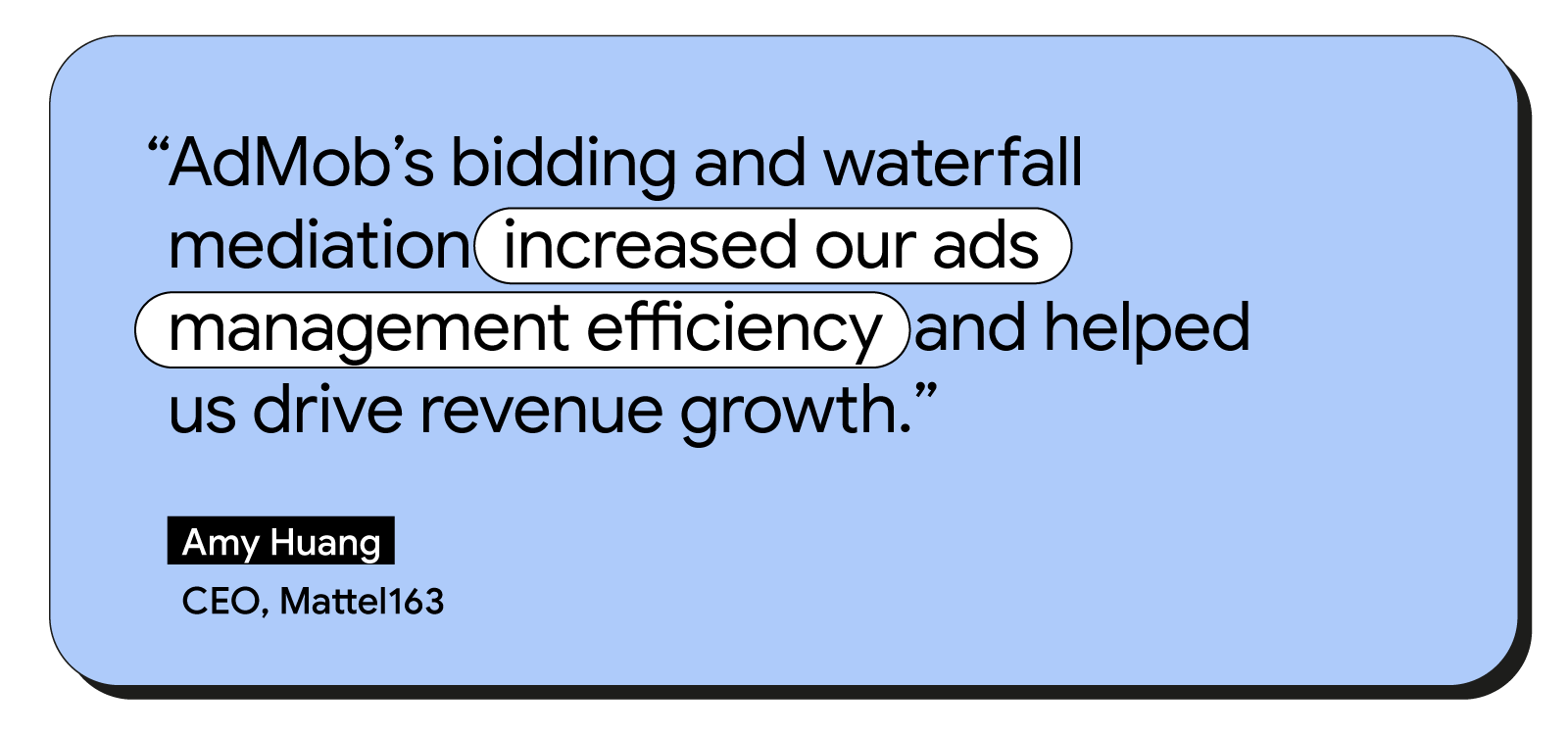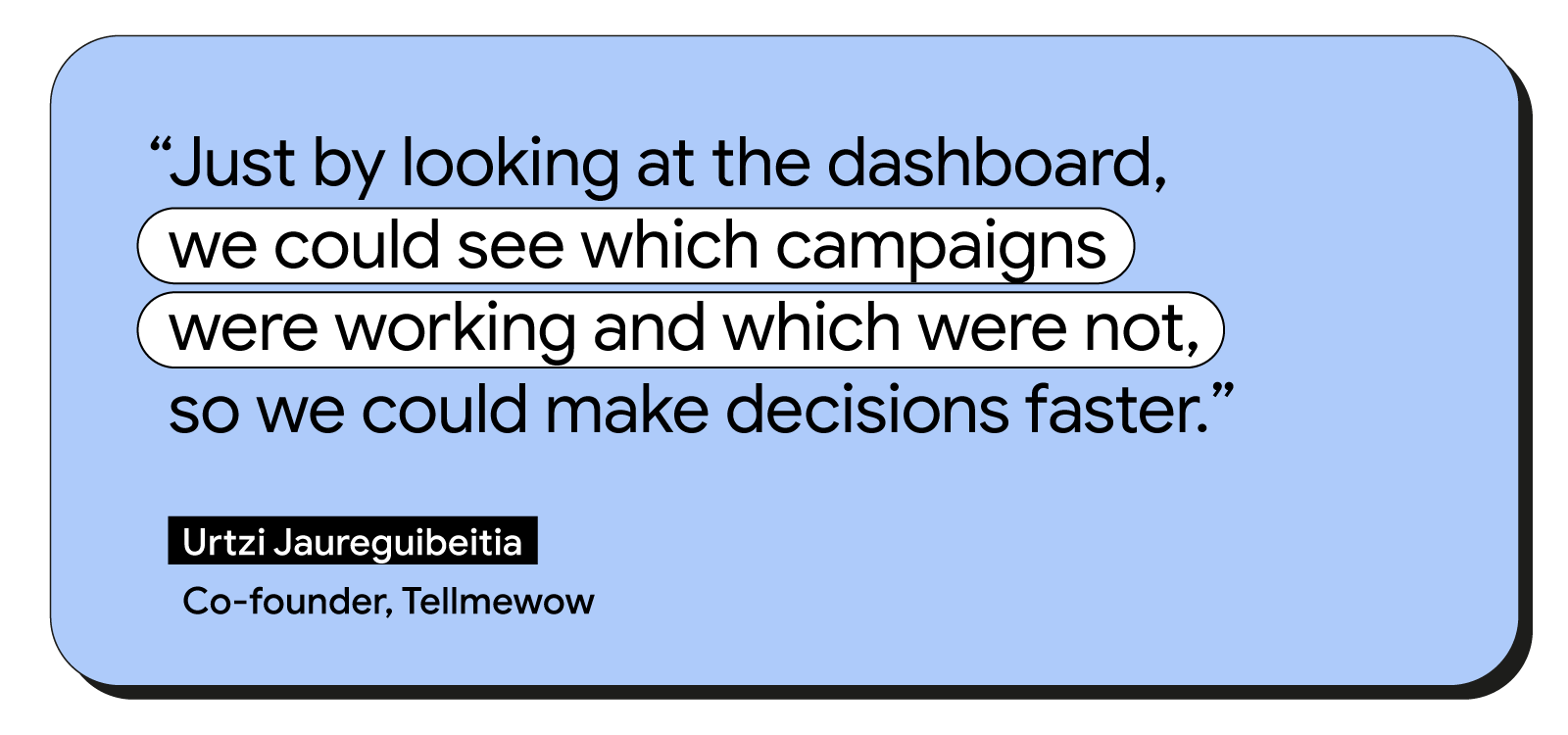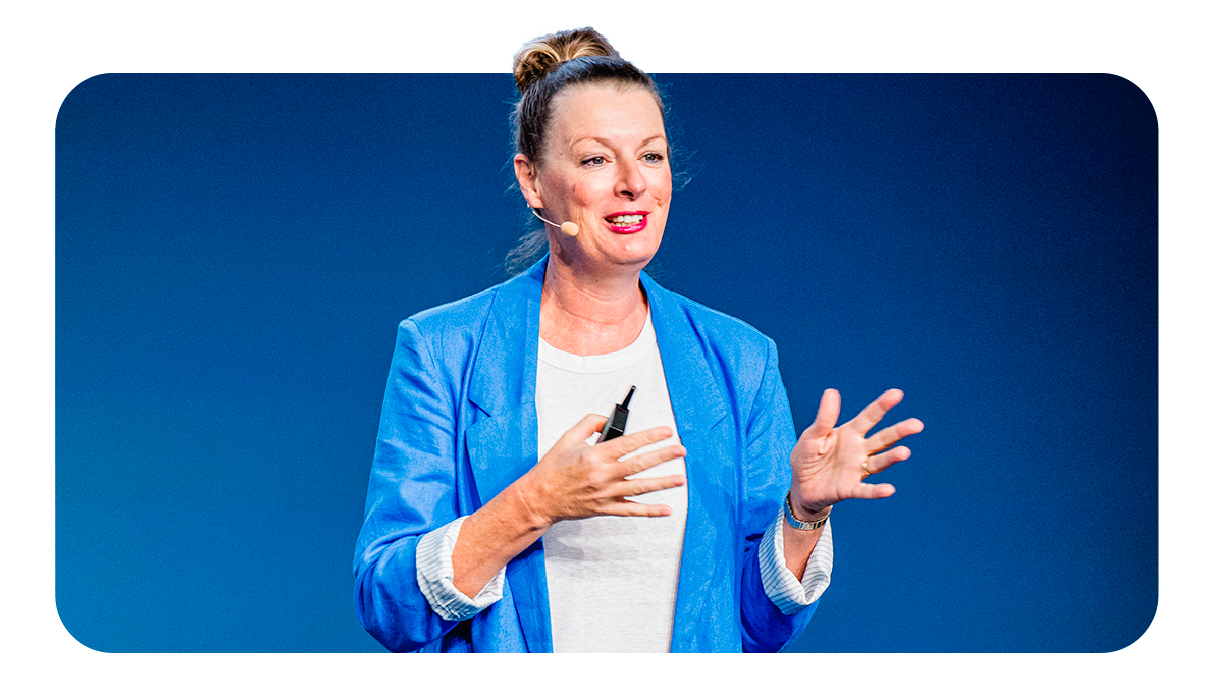If you’re an app developer in APAC, odds are, you’re ever more focused on your bottom line as you brace for macroeconomic uncertainties ahead.
In fact, a recent survey by Google and MTM found revenue maximisation to be the top business goal for two-thirds of app developers in APAC.1 Not only does it provide vital cash flow for day-to-day operations, it also supports other key business goals, including sustainable app growth and delivering a reliable app experience.
It’s no surprise then that APAC’s app developers are quick to jump ship if a platform doesn’t meet their business goals. They tend to use more than one ad monetisation platform — or an average of 1.8 platforms,2 to be exact — and 69% of the developers surveyed cite “poor or unproven revenue performance” as the top reason for switching platforms.3
To help app developers choose the right monetisation platform for their business goals, we surveyed the industry on its needs and identified three top considerations:
1. Powerful features that maximise ad revenues
More than half of the developers surveyed said their top criteria for a platform is its ability to help them maximise ad revenues. Afterall, ads drive $2 out of every $3 spent on mobile apps.
For developers, it’s crucial that an ad monetisation platform offers them more choice, control, and flexibility over their mobile app monetisation strategies. In fact, platform features like ad network optimisation and real-time bidding were cited by 8 in 10 developers as being among the most important for them to generate revenue through ad monetisation.
Here’s a list of ad-related features you should look out for in the ad monetisation platform you choose:
Ad network optimisation: Platforms typically offer this feature as an alternative to performing manual waterfall mediation updates. And AdMob, which lets you choose the best performing networks for your location and ad formats from numerous networks globally, offers a powerful ad network optimisation feature. It can dynamically rearrange your waterfall mediation to optimise for valuable outcomes such as cost per impression.
Ad source accessibility: This feature lets you have more choice and better performance when it comes to mediation management. AdMob, for instance, has accelerated its onboarding of more high-quality buyers to participate in unified bidding and waterfall mediation, and help developers generate more revenue from their apps.
Real-time bidding: With multiple buyers bidding real time on a platform, you can maximise the value of your ad inventory while improving the efficiency of your ad monetisation by improving fill rates and ad latency.
Mattel163, a joint venture between toy giant Mattel and internet company Netease, for instance, used AdMob’s real-time bidding auction to maximise revenues for its Phase 10 mobile app, a rummy-style card game with tens of millions of downloads.
With more than 200 ads buyers competing in real-time auctions on the AdMob platform, Mattel163’s mobile app enjoyed a better-than-expected 12% increase in ad revenue.
The studio also halved the time it spent each day on mediation operations with Admob’s waterfall mediation management, and this freed up its staff to grow other areas of its monetisation business.

2. Actionable insights that drive sustainable app growth
Another way to maximise app revenue is to have a data-backed strategy for growing your app user base. And for that, you’ll need a comprehensive view of your ad earnings, which is why 74% of those surveyed say it’s key to have a platform that equips them with data and insights for optimising ad revenue performance.5
AdMob’s ad activity report combines data, metrics, ad sources, and other key information from various reports into a single, unified view. This gives you easy access to more actionable insights about your app users. That’s how Spanish game developer Tellmewow optimised its user acquisition campaigns at scale.
First, it gathered accurate revenue data from users acquired from hundreds of paid campaigns by connecting AdMob's impression-level ad revenue feature with other products like Google Ads campaigns, Firebase, and Data Studio (now Looker Studio). Then, armed with this data, it worked with Google to build its own return-on-ad-spend dashboard.

The AdMob-powered insights helped Tellmewow scale its ad campaigns more effectively and profitably. The result was a 22% jump in return on ad spend across all campaigns.
3. Platform that provides a reliable app experience
To maximise revenues, you as a developer need to strategically balance ad monetisation with a satisfactory app experience to retain users.
A user-friendly app experience is key to unlocking revenues, since most mobile and gaming app users say they’d rather see ads in exchange for free content and services, than pay for apps and avoid all ads. But therein lies a potential pitfall.
Developers need to avoid going all out to serve ads to earn as much revenue as possible because too many ads — particularly low-quality ones — could disrupt the user experience so much that the app ends up losing customers and hurting the bottom line.
An ads reservation strategy can help you strike a good balance between retaining app users and maximising ad revenue.
Platforms like AdMob typically offer a temporary ad serving limit to protect users from fraud or bad ad experiences. Such limits are viewed by 63% of developers as being very important to a user-friendly ad experience,6 which helps to retain users and sustain revenue growth in the longer term.
There’s also the question of how to avoid serving low-quality ads that turn users off, or not irritating them by repeating the same ad multiple times. AdMob addresses this issue by making the option to skip or close ads always available to users. But it’s more important to prevent this issue from arising in the first place, by controlling the kind of ads served, based on users’ preferences.
Ultimately, maximising ad revenues and retaining app users isn’t a zero-sum game. With a good ad monetisation strategy, you can grow a loyal user base and win even more revenue in the long run. And choosing the right monetisation platform will go a long way in helping you maximise revenues, sustain user growth, and provide a quality app user experience.








